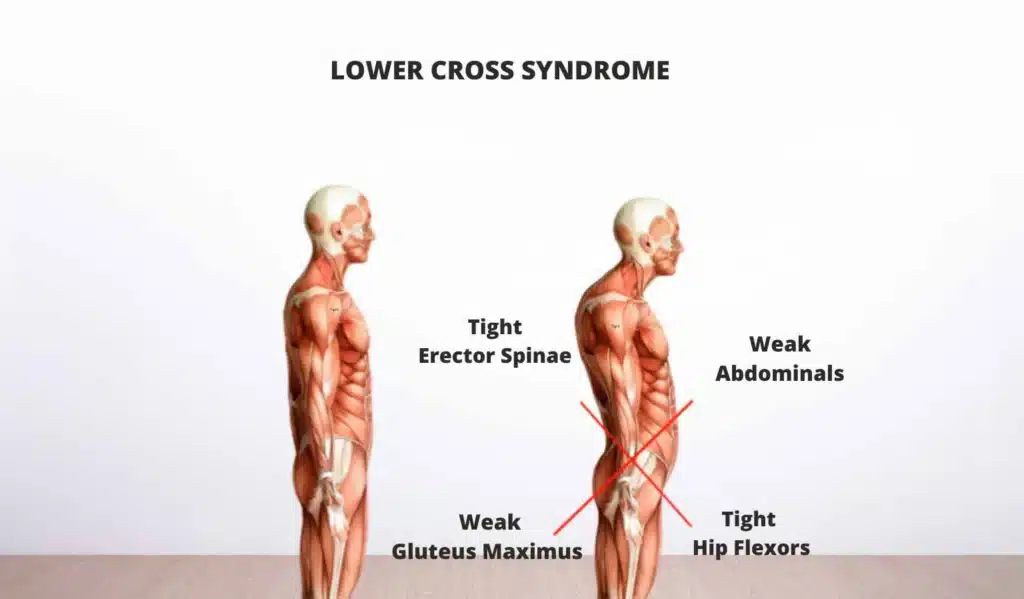Many people are curious about the differences between chiropractor and physical therapy adjustments. Both are non-invasive, but they approach body adjustments in different ways. Knowing these differences helps you make better health choices.
Chiropractors mainly work on the spine, focusing on alignment. Physical therapists, on the other hand, use a variety of methods to boost mobility and function. Each method has its own strengths for treating different musculoskeletal problems. Let’s dive into how these two compare in their treatment philosophies and techniques.
Key Takeaways
- Chiropractor adjustment targets spinal alignment
- Physical therapy adjustment uses diverse techniques
- Both offer non-invasive therapy options
- Musculoskeletal treatment varies between approaches
- Understanding differences aids in healthcare decisions
- Each method has unique benefits for patient care

Understanding Better Body Alignment
Body adjustments are key in today’s healthcare. They help improve physical function and reduce pain. Let’s look at what body adjustments are and why they’re important for musculoskeletal issues.
Being able to move, sit, and stand correctly can help you stay active and avoid incapacity and broken bones. The amount of kyphosis, or forward curvature of the upper back, that can be caused by fractured spine bones can also be reduced with proper posture.
Alignment is among the most crucial aspects of posture and body mechanics. The relationship and alignment of the head, shoulders, spine, hips, knees, and ankles are referred to as alignment. Good posture and less strain on the spine are two benefits of proper body alignment.
What does good posture look like, you ask?
Utilize the “wall test” to determine:
- Position yourself such that your heels are 2 to 4 inches from the wall and that the back of your head, shoulder blades, and buttocks all touch the wall.
- Place your flat hand behind your little back. For a proper lower back curve, your hand should just barely be able to glide between your lower back and the wall.
- Draw your belly button toward your spine if there is too much room behind your lower back. By doing this, you can gently pull your lower back closer to the wall and flatten the curve in your back.
- Arc your back just enough to allow your hand to go behind you if there isn’t enough room behind your lower back.
Maintain good posture as you move away from the wall. After that, go back to the wall to see if you maintained proper posture.
Definition of Body Adjustments
Body adjustments include many therapies like spinal manipulation and joint mobilization. These methods use controlled force to fix joint and soft tissue alignment.
Body alignment adjustment in the context of physical therapy encompasses various techniques and exercises aimed at rectifying bodily misalignments, with particular emphasis on the spine, joints, and musculature. Optimal body alignment signifies the ideal positioning of the body’s skeletal, muscular, and joint systems, thereby diminishing strain and facilitating effective movement. Misalignment has the potential to result in discomfort, injury, and diminished mobility.

What is Body Alignment?
Body alignment pertains to the relative positioning of the head, spine, shoulders, hips, knees, and feet with respect to one another. When alignment is achieved correctly:
Weight distribution is balanced across the entirety of the body. Joints exhibit smooth and efficient movement. Muscles operate at their optimal capacity without unnecessary tension.
Causes of Misalignment Poor Posture: Prolonged periods of incorrect sitting or standing postures (such as slouching). Muscle Imbalances: The overuse or weakness of certain muscle groups can induce a displacement of joints from their proper alignment. Injury: Traumatic events or repetitive strain may precipitate compensatory movement patterns, resulting in misalignment. Structural Issues: Anomalies such as scoliosis or discrepancies in leg length may engender misalignment.
How Physical Therapy Helps Adjust Body Alignment
Assessment: The physical therapist conducts an evaluation of your posture, gait (walking pattern), muscle imbalances, and joint mobility to identify the specific locations of misalignments.
Manual Techniques: Practitioners may employ hands-on methodologies to realign the joints and spine. Such techniques include:
Joint Mobilization: A gentler, more gradual manipulation of joints aimed at restoring normal movement. Spinal Manipulation: A swift, controlled force directed at misaligned regions, typically employed for spinal-related concerns. Soft Tissue Mobilization: Techniques such as massage or myofascial release to alleviate muscle tightness and enhance flexibility.
Strengthening Exercises: The rectification of alignment frequently necessitates the fortification of underdeveloped muscle groups. Physical therapists prescribe targeted exercises aimed at specific muscle groups, such as:
Core Strengthening: Robust core musculature (including abdominal, back, and pelvic muscles) provides essential stability to the spine and assists in the maintenance of proper posture. Hip and Glute Exercises: These muscular groups contribute to lower body alignment, thereby preventing complications such as knee pain or hip misalignment.
Stretching: Muscular tightness can exert a pulling force on joints, leading to misalignment. Stretching exercises facilitate the release of tension, elongation of muscles, and enhancement of flexibility, all of which contribute to improved posture.
Posture Training: The therapist instructs on appropriate techniques for sitting, standing, and movement to uphold proper alignment in everyday activities. This instruction may encompass:
Proper methodologies for lifting objects. Ergonomic modifications to one’s workspace. Strategies for sustaining correct posture during ambulation or exercise.
Balance and Gait Training: Exercises designed to enhance balance and walking patterns can assist in rectifying alignment issues within the hips, knees, and ankles, thereby improving overall coordination and movement efficiency.
Spinal Manipulation in Physical Therapy
In the domain of physical therapy, spinal manipulation represents one of the methodologies employed to mitigate pain, enhance mobility, and rehabilitate function in individuals experiencing spinal or musculoskeletal disorders. Although it bears resemblance to chiropractic spinal adjustments, physical therapists integrate it within a more extensive rehabilitation framework. The following delineates its integration into physical therapy:

How Spinal Manipulation is Utilized in Physical Therapy
Assessment: Initially, the physical therapist performs a comprehensive assessment, which encompasses an analysis of the patient’s medical history, physical examinations, and diagnostic evaluations, to ascertain the appropriateness of spinal manipulation.
Manual Techniques: The physical therapist may implement manual techniques, which include spinal manipulation and spinal mobilization (a more gentle variant), to alleviate pain or enhance movement. These techniques specifically target particular joints within the spine to restore proper alignment or functionality.
Complementary Exercises: Spinal manipulation is frequently employed in conjunction with additional therapeutic modalities such as stretching, strengthening exercises, postural education, and ergonomic guidance. These adjunctive treatments facilitate the preservation of the benefits derived from manipulation over an extended duration.
Individualized Plan: The methodology is generally tailored to meet the distinct requirements of the patient, emphasizing the enhancement of flexibility, the attenuation of pain, and the rectification of any underlying factors contributing to discomfort, such as inadequate posture or muscular weakness.
Benefits in Physical Therapy Pain Relief:
It is commonly utilized to alleviate back pain, neck pain, and headaches by diminishing tension and lessening nerve irritation.
Improved Mobility: By realigning the spinal structure, it can aid in restoring the range of motion, thus facilitating the performance of other therapeutic exercises.
Faster Recovery: Spinal manipulation may constitute a component of a comprehensive treatment strategy aimed at accelerating recovery from injuries or surgical interventions, particularly in cases where spinal mobility is compromised.
When is it Utilized?
- Lower back pain
- Neck pain
- Headaches
- Sciatica
- Herniated or protruding discs
- Athletic injuries
- Joint dysfunction
Spinal Manipulation in Chiropractic Cares
Spinal manipulation is one of the primary treatments used in chiropractic care to address issues related to the spine, muscles, and nervous system. Chiropractors are trained professionals who use this technique to relieve pain, improve mobility, and promote overall health by restoring proper alignment of the spine.

How Spinal Manipulation Functions in Chiropractic Practice
Initial Evaluation: The chiropractor undertakes a comprehensive evaluation, which encompasses an analysis of your medical history, an examination of your spinal structure, posture, and range of motion, and occasionally employing imaging modalities such as X-rays. This process aids in the identification of misalignments (termed subluxations) or dysfunctional areas within the spinal column.
Adjustment Techniques: Chiropractors utilize their hands or specialized instruments to exert a controlled, rapid force on specific vertebrae. The objective is to rectify spinal misalignments that may be responsible for pain or impairing nerve function. This manipulation may produce an audible “popping” or “cracking” sound, which is attributed to the release of gas bubbles within the articulations.
Manual Spinal Adjustments: These techniques represent the most prevalent methods in chiropractic practice, and they encompass:
High-Velocity, Low-Amplitude (HVLA) Thrusts: A swift, controlled maneuver directed at a particular joint within the spine. This is frequently associated with the generation of a popping sound.
Spinal Mobilization: A more gradual, gentler manipulation suitable for individuals requiring a softer approach (e.g., geriatric patients or those with specific conditions).
Activator Method: This technique employs a small, spring-loaded device to deliver a precise, gentle force to a designated region of the spine.
Holistic Approach: Chiropractors frequently adopt a holistic methodology, integrating spinal manipulation with complementary therapies, such as:
- Soft tissue therapy: Massage or alternative techniques aimed at alleviating muscle tension surrounding the spine.
- Exercises: Prescribed stretching and strengthening regimens to promote spinal health and uphold alignment.
- Posture education: Instruction on the maintenance of proper posture and body mechanics in daily activities to avert future complications.
Benefits of Spinal Manipulation in Chiropractic Practice Pain Alleviation:
It is widely employed to address back pain, neck pain, headaches, and conditions such as sciatica or herniated discs. Enhanced Mobility: By rectifying spinal misalignments, it can restore optimal movement in the spine and adjoining joints, thus improving overall mobility. Nerve Function: Chiropractors assert that spinal misalignments can disrupt nerve signaling, resulting in pain and various health concerns. Realigning the spine may facilitate the enhancement of nerve function. Non-Invasive: Chiropractic spinal manipulation represents a drug-free, non-invasive modality that can serve as an alternative or adjunct to other therapeutic approaches, including pharmacological interventions or surgical procedures.
Conditions Addressed Through Spinal Manipulation
- Lower back pain
- Neck pain
- Headaches
- Sciatica
- Herniated or protruding discs
- Athletic injuries
- Joint dysfunction
Safety and Considerations
Spinal manipulation is generally regarded as safe when executed by a licensed chiropractor. Some individuals may experience mild soreness post-treatment, akin to the discomfort following physical exercise. Certain patients, such as those with osteoporosis, fractures, or severe spinal disorders, may not be suitable candidates for spinal manipulation. Chiropractors evaluate each individual to ascertain the appropriateness of the technique for their specific condition.
Spinal Manipulation: Chiropractic vs. Physical Therapy Perspectives
Spinal manipulation is a key technique in treating musculoskeletal issues. Both chiropractors and physical therapists use it, but they have different ways of doing it.
Chiropractors see spinal manipulation as a main treatment. They adjust the spine to fix misalignments, hoping it will boost overall health. Their methods often involve quick, forceful movements to align joints.
Physical therapists, however, see spinal manipulation as part of a bigger plan. They use softer techniques, like joint mobilization, to help with movement and pain. Their approach is slower and more controlled.
| Aspect | Chiropractic | Physical Therapy |
|---|---|---|
| Primary Focus | Spinal alignment | Overall function |
| Technique | High-velocity thrusts | Gentle mobilization |
| Treatment Goal | Correct misalignments | Improve mobility and reduce pain |
Both methods have been shown to work well for many musculoskeletal problems. The choice between chiropractic care and physical therapy depends on what the patient needs and wants.
“Spinal manipulation, when performed by trained professionals, can be a valuable tool in managing musculoskeletal pain,” notes a recent study in the Journal of Manual & Manipulative Therapy.
Knowing the differences between these approaches helps patients make better choices. It ensures they get the right treatment for their condition.
Greenbell Physical Therapy Clinic: Integrating Best Practices
Greenbell Physical Therapy Clinic in Thailand is known for its mix of chiropractic and physical therapy. It offers a variety of services to tackle different muscle and bone problems.
Specialized Services Offered
The clinic focuses on digital postural analysis, pilates, and physical rehab. Each service is made to fit the patient’s specific needs. This ensures the best recovery and health in the long run.

| Service | Description | Benefits |
|---|---|---|
| Digital Postural Analysis | Advanced technology to assess body alignment | Precise diagnosis, targeted treatment plans |
| Personalized Exercise | Customized programs for core strength | Improved flexibility, balance, and posture |
| Physical Rehabilitation | Comprehensive recovery programs | Restored function, pain reduction |
Unique Approach to Body Adjustments
Greenbell uses both old and new methods. The Exbody Posture Analysis system gives deep insights into body mechanics. This helps therapists make plans just for you.
Conclusion
Chiropractor adjustment and physical therapy adjustment both help with musculoskeletal treatment. Chiropractors mainly focus on spinal alignment. Physical therapists look at the whole body’s mechanics.
Both methods are good at reducing pain and boosting mobility. Non-invasive therapies are common in both fields. Chiropractic care often includes quick, precise adjustments.
Physical therapy, however, might include exercises, manual techniques, and education. Your choice depends on what you need and your health goals.
In Thailand, clinics like Greenbell Physical Therapy offer a mix of both. They use advanced tools like Exbody Posture Analysis. This ensures patients get care that fits their specific needs.
Knowing the differences helps you make better health choices. You might pick chiropractic care, physical therapy, or a mix. The main goal is to enhance your life through effective treatment.







